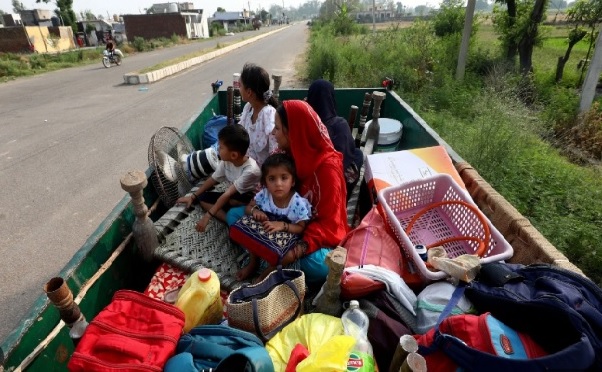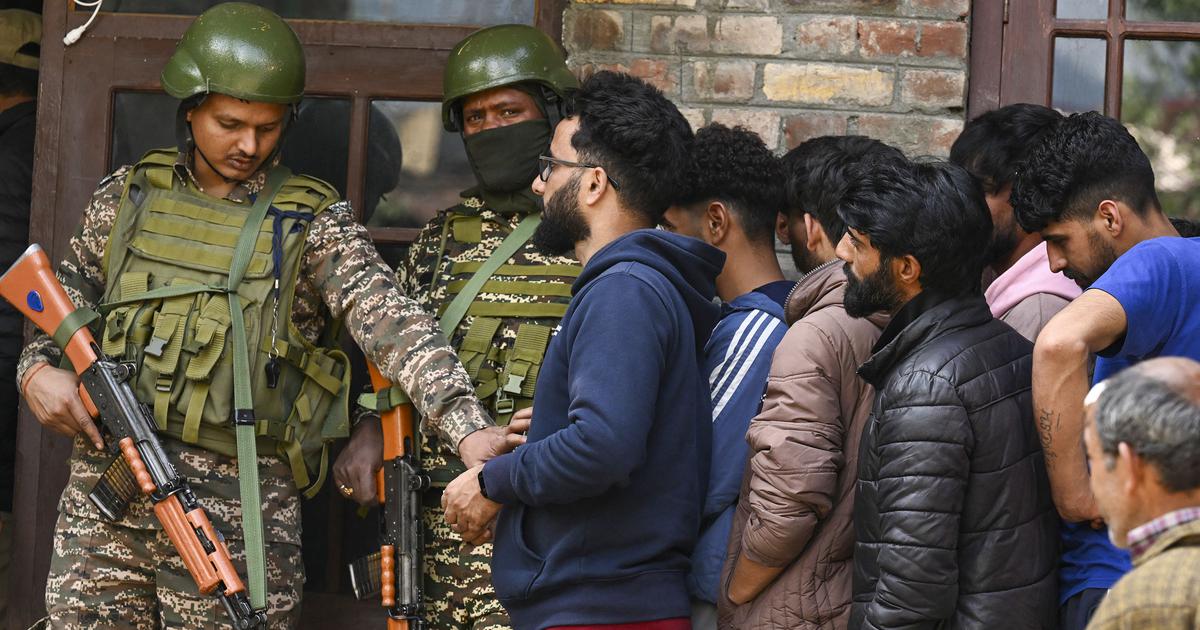Kashmir Under Fire: Civilians Evacuate as Cross-Border Shelling Intensifies
Srinagar 09 May 2025: The fragile peace along the Line of Control (LoC) has once again been shattered as Pakistan continues artillery fire across multiple sectors in Jammu and Kashmir. Since Wednesday night, border villages have witnessed intense shelling, gunfire, and military retaliation, leading to civilian casualties, evacuation efforts, and widespread infrastructure damage.
With Kupwara, Baramulla, Uri, and Akhnoor bearing the brunt of unprovoked Pakistani attacks, the Indian Army has responded proportionally, ensuring defensive measures while safeguarding residents. However, as homes, shops, and government buildings crumble under fire, thousands are being forced to flee, seeking safety in temporary shelters and nearby towns.
This article explores the scale of destruction, evacuation response, political implications, and the uncertain future of conflict-stricken communities in Jammu and Kashmir.
The Rising Tensions: Heavy Artillery and Ceasefire Violations
Overnight Shelling Leaves Civilians Wounded
- 15 civilians injured in Kupwara, Uri, and Tanghdar as artillery fire continues.
- Dozens of houses, shops, and government buildings damaged in shelling across border villages.
- Schools, hospitals, and infrastructure severely impacted, raising safety concerns.
The Indian Army confirmed Pakistan’s aggressive actions, stating that enemy positions launched unprovoked attacks across Kupwara, Baramulla, Uri, and Akhnoor sectors during the night of May 7 and 8. The response from Indian forces ensured containment of threats, though the scale of destruction remains devastating.
Evacuations Begin as Fear Takes Hold
- Hundreds of villagers from Uri and Kupwara relocate to safer areas, including Baramulla and Srinagar.
- Baramulla administration stations 50 buses at the local degree college for rapid evacuations.
- Temporary shelters set up in government buildings to accommodate displaced civilians.
As more families abandon their homes, the government has made arrangements for up to 10,000 evacuees, providing shelter, food, and medical aid. However, many villagers have opted to stay with relatives, rather than depend on government assistance.
Humanitarian Crisis: Struggles of the Displaced
Survival Amid Chaos
With heavy shelling damaging homes, families are fleeing with whatever belongings they can carry, uncertain of when they can return. The psychological toll is immense, with residents forced to leave behind livestock, businesses, and personal belongings in the wake of escalating violence.
- Essential supplies running low as displaced families rely on relief efforts.
- Temporary shelters facing overcrowding, leaving residents struggling for food and medical aid.
- Limited communication—many locals unable to contact relatives due to network disruptions in affected areas.
Medical Response for the Injured
- Doctors at Baramulla Medical College confirm injuries are stable, with four patients expected to be discharged within days.
- Emergency medical teams on standby, prepared for additional casualties.
- Relief teams dispatched to provide medical kits, trauma counseling, and emergency aid.
While initial medical response has been swift, the continued hostilities and fear of further violence make long-term healthcare provisions uncertain.
Economic Fallout: Impact on Trade & Tourism
Businesses & Markets Take a Hit
- Local markets disrupted, with fewer goods reaching border villages.
- Trade routes affected, worsening financial losses for vendors and businesses.
- Limited availability of fresh produce, leading to price surges in staple goods.
With business owners forced to shut shops, and transport networks disrupted, the regional economy faces potential collapse if tensions persist.
Tourism Suffers: Gulmarg Gondola Shut Down
- Authorities closed Gulmarg Gondola, Kashmir’s popular tourist attraction, due to its proximity to the LoC.
- Domestic and international travel cancellations rise, as flights into Srinagar airport remain uncertain.
The economic impact of growing instability is severe, forcing many dependent on tourism and trade to seek alternative employment or rely on government subsidies for survival.
Government Response & Security Measures
Authorities Tighten Security & Reinforce Borders
- Indian forces continue defensive retaliation, securing border villages.
- Army patrols increased, safeguarding evacuation efforts.
- Security forces on high alert, monitoring further Pakistani incursions.
School Closures & Public Safety Announcements
- Schools, colleges, and universities shut down in Baramulla, Kupwara, and Gurez as precautionary measures.
- Institutions near Srinagar and Awantipora airports also shut, avoiding risks for students and staff.
- Public advised to remain indoors, stock up on essentials, and follow government advisories.
As schools close indefinitely, students are turning to online learning to mitigate academic disruptions. However, mobile network issues are making education accessibility challenging for thousands.
Diplomatic Fallout: Will the Conflict Escalate?
Global Leaders Urge Restraint
- The United Nations issues a statement, urging both India and Pakistan to de-escalate tensions.
- International bodies monitor ceasefire violations, highlighting the humanitarian crisis.
- China and the U.S. offer diplomatic mediation, though solutions remain uncertain.
With border clashes intensifying, the possibility of a prolonged conflict threatens regional stability and diplomatic relations. Global pressure for peace may play a crucial role in determining the next steps for both nations.
What Comes Next?
With civilians displaced, schools shut, economic fallout worsening, and diplomacy hanging by a thread, Kashmir faces uncertain days ahead. Military movements will determine whether tensions escalate or ease. Evacuation efforts will continue, prioritizing public safety. Relief teams will assess long-term impact, strategizing humanitarian aid.
For now, residents must remain vigilant, awaiting government directives to navigate the unfolding crisis.
Bottom-Line: A Region in Turmoil
Jammu and Kashmir’s latest military tensions have left thousands displaced, injured, and uncertain about their future. As border villages witness artillery fire, the region is caught between conflict and survival, hoping for diplomatic solutions to prevail.
The coming days are critical, as governments, security forces, and relief agencies work to mitigate risks and protect civilians. Will peace return, or will Kashmir continue to endure instability? Only time will tell.



